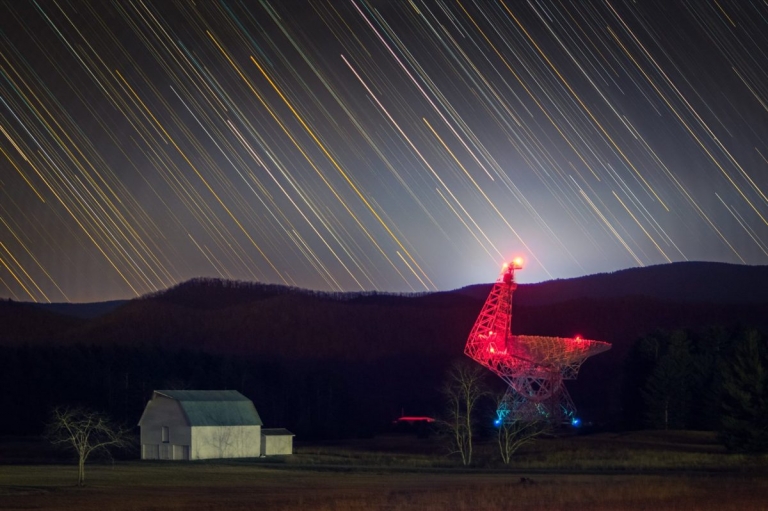West Virginia University’s Duncan Lorimer might be the "godfather of the fast radio burst," but a pair of international students have taken exploring these mysterious cosmic flashes to a new level.
In 2007, Lorimer was credited for helping discover fast radio bursts—the intense, unexplained pulses of energy, light years away, that pop for mere milliseconds. Since then, only around 100 have been spotted.
But astronomers knew there were more out there. One major obstacle to new discoveries came in the form of researchers having to manually read data plots, recorded by satellite imaging, for hours on end.
Devansh Agarwal and Kshitij Aggarwal, both physics and astronomy graduate students from India, recognized this painstaking task so they developed a quicker, more efficient way to detect fast radio bursts.
Lorimer said the Agarwal and Aggarwal have successfully created artificial intelligent, machine-learning software that sifts through the endless clutters of data.
“Fast radio bursts are hard to find because they’re intermittent in nature,” said Lorimer, an astronomy professor and Eberly College associate dean for research.
“We have telescopes collecting data very rapidly in real-time, so we’re amassing huge amounts of data, which becomes a data processing and analysis challenge.
"It’s overwhelming, even for an army of students and researchers. You could be sitting there 24 hours a day looking at these plots and that’s not an exaggeration.”
Through analysis, researchers can identify “candidate events,” in which a data point could possibly turn out to be a fast radio burst. Or it could just be interference or noise.
So Agarwal and Aggarwal set out to write computer code and software they’ve trained to distinguish whether the candidate events are actually fast radio bursts or other types of pulses.
The students dubbed the software FETCH, which stands for “fast extragalactic transient candidate hunter.” And they’ve made it open-source, meaning anyone anywhere is free to use it.
“Our aim off the bat was to use AI to model a task that humans can do with the same precision or better,” Agarwal said.
“People have been using AI for a myriad of techniques in biological systems, x-rays, cat scans, and MRIs to identify diseases. We wanted to make our system generic enough that anyone can use it anywhere in the world.”
Already, scientists have used FETCH in Australia to find new fast radio bursts.
The software will also come in handy for research through the Green Bank Observatory, a partner of WVU and a key site for the University’s astronomy research. The Green Bank Telescope, located in Pocahontas County, is the world’s largest fully steerable radio telescope.
“With Green Bank, it has allowed us to operate in an environment where we would normally have thousands of pulses to look through per day down to one or two,” Lorimer said.
Lorimer said the idea for this innovation came from the students themselves.
“We're really pleased when students take an initiative,” he said. “I see my role nowadays as a few steps away from the research, but I try to give the students the knowledge that they can run with.
"It’s like learning a new language. You teach them a few phrases and then they’ll string together full sentences. Or learning music. You teach them a couple of notes and they take it and come up with new tunes.”





























